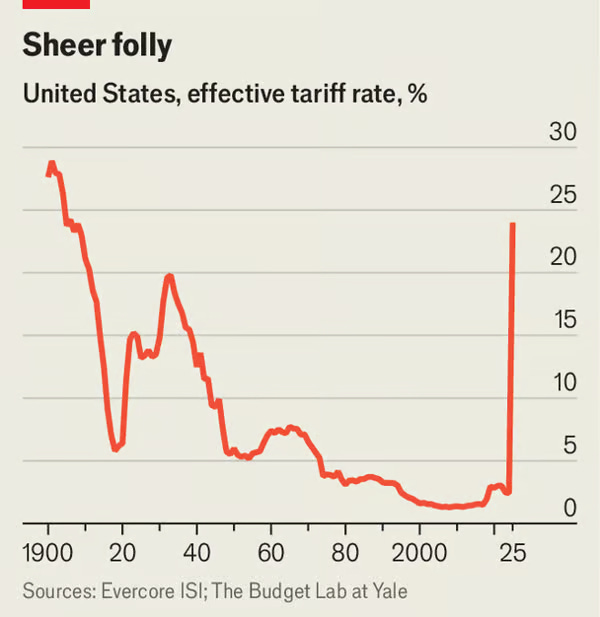Liberation Day.
Torpedo bats.
“In my dreams I would have the perfect AI generated email first thing every morning with the most substantive articles of interest to me in foreign affairs, domestic policy, business, tech and media distilled with on point commentary. Oh wait! I already have it with News Items by John Ellis.” — Annie Lamont, co-founder of Oak HC/FT, a leading venture capital firm.
1. President Trump announced a sweeping new tariff plan at a Rose Garden ceremony, a stark shift in U.S. trade policy. The U.S. will impose a 10% tariff on all imports and much higher rates for some nations, Trump said in unveiling a series of moves he declared “Liberation Day” for U.S. trade policy. The plan combines two concepts debated by aides—a universal tariff and nation-specific duties. Here is what to know:
There is a 10% baseline tariff. These are across-the-board levies on all imports, effective April 5.
Other nations will be hit with what Trump called a “discounted reciprocal tariff.” The higher rates are for nations the White House considers bad actors on trade. For example, duties will be 24% on Japan and 20% on the European Union, in lieu of the universal 10% tariff, effective April 9. The EU said it is preparing fresh countermeasures if negotiations fail.
A new 34% tariff on China will add to previous duties, like the 20% tariff Trump imposed over fentanyl. The base tariff rate on Chinese imports will be 54%, before adding tariffs imposed during Joe Biden’s presidency or Trump’s first term. Beijing said it would take measures in response to the new tariffs.
Canada and Mexico are excluded from the reciprocal tariff regime. They are still subject to plans to impose 25% tariffs on most imports to the U.S. for what Trump says is their role in fueling the fentanyl crisis and illegal immigration. An exemption for these levies on autos and many other goods was in place but due to expire on April 2.
Trump’s 25% tariffs on foreign-made automobiles took effect at 12:01 a.m. ET.
U.S. stock-index futures and Asian equities fell sharply, reflecting fears that the tariffs will slow growth and boost inflation. Popular stocks such as Apple, Amazon and Nike were among the largest retreaters, dropping 6% or more. (Source: wsj.com)
2. The Economist:
Few expected him to go quite so far. In a stunning shift in American economic strategy, Donald Trump has yanked up tariffs across the board. On April 2nd, speaking from the Rose Garden of the White House, he declared that America would impose levies of 10% on all imports plus higher “reciprocal” rates—much higher in some cases—to get back at countries which, in his view, have treated America unfairly. Coming on top of other tariffs announced since his return to the White House, the result is that, in the space of ten weeks, he has erected a wall of protection around the American economy akin to that of the late 1800s (see chart).
3. The Yale Budget Lab modeled the effect of both the April 2nd tariff announcement in isolation and all US tariffs implemented in 2025. Bullet points:
Keep reading with a 7-day free trial
Subscribe to News Items to keep reading this post and get 7 days of free access to the full post archives.


